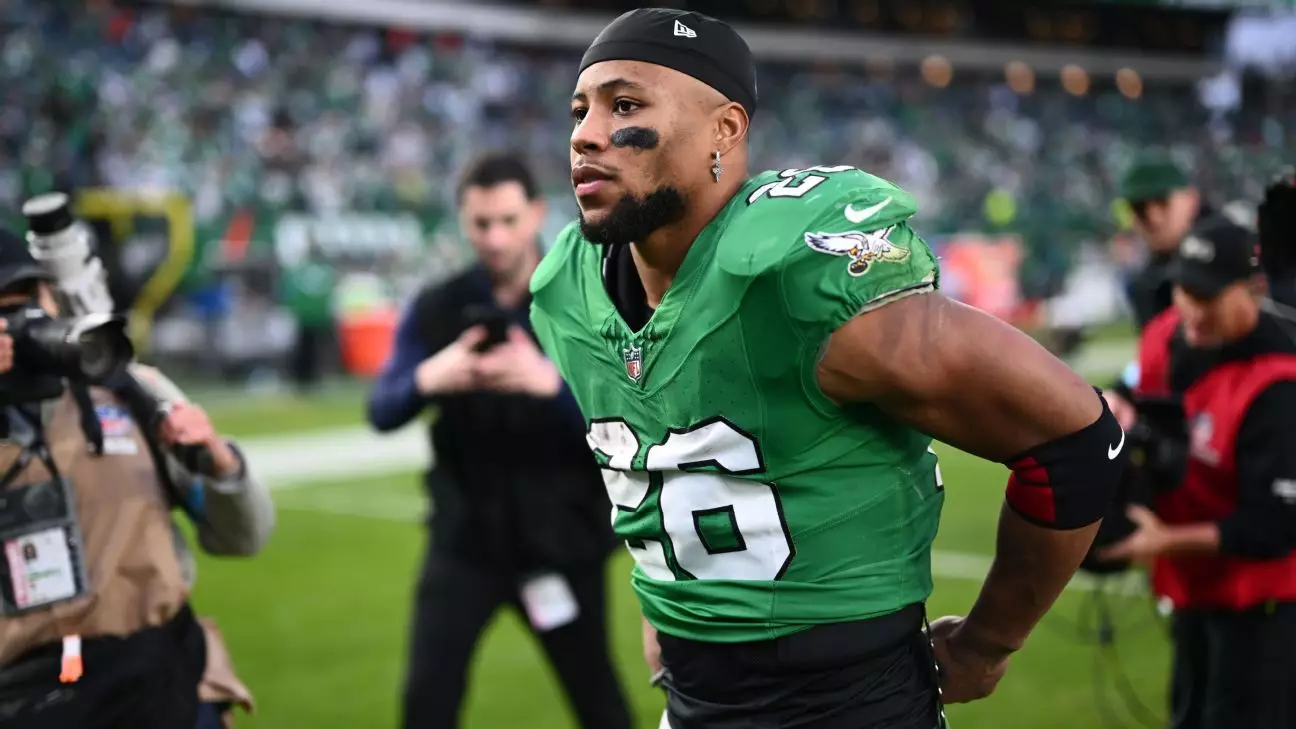As the NFL season approaches its climax, the stakes become elevated, not only for the teams fighting for playoff positioning but also for individual players seeking to etch their names into the annals of history. The Philadelphia Eagles, boasting an impressive 13-3 record, have already secured the NFC East title and are primed for a playoff run as the No. 2 seed in the conference. However, within this team dynamic, a compelling narrative is unfolding surrounding star running back Saquon Barkley and his pursuit of the single-season rushing record. With only 101 yards standing between him and Eric Dickerson’s long-standing record of 2,105 yards, the question remains: will head coach Nick Sirianni allow Barkley a shot at glory, or will he prioritize the long-term health and performance of his roster?
Sirianni’s challenge lies not only in navigating the aspirations of Barkley but also the competitive landscape of the upcoming playoffs. On one side of the coin is the ambition of an athlete burning to break records and foster a legacy. Barkley’s a talent that, despite injury setbacks, has shown determination and skill that resonates with fans and teammates alike. Yet, on the flip side, the rationale for resting key players becomes increasingly persuasive when considering the injury risks against the backdrop of the more significant playoff challenges ahead.
In a recent interview, Sirianni indicated that he would engage in discussions with a range of stakeholders within the organization, including owner Jeffrey Lurie and general manager Howie Roseman. His consultative approach reflects a leadership style that values input and recognizes the intricacies of decision-making in sports. Sirianni has made it clear that while individual records hold significance, he must evaluate how they align with the broader objectives of the team. This multifaceted assessment speaks to the complexity of coaching in a high-stakes context.
Sirianni’s historical context is rich with similar scenarios that can guide his decision-making. Notably, in the 2021 season finale, he opted to play wide receiver DeVonta Smith in a bid for the franchise rookie receiving yards record while resting several key players. This move highlights the delicate balance coaches must maintain between fostering individual milestones and ensuring the overall welfare of the squad. Sirianni’s acknowledgment that “every situation is a little different” is an important aspect of the strategic calculus that sets the Eagles apart in this critical moment.
Barkley, for his part, seems unfazed by the uncertainties surrounding his potential record chase. In discussions with the media, he expressed an unequivocal support for Sirianni’s ultimate decision, indicating a team-first mentality that is commendable in an age when players are often driven by personal accolades. His readiness to adapt—be it striving for a record or conserving energy for the playoffs—exemplifies a maturity that resonates with both fans and organizational leadership.
As the NFL continues its tradition of showcasing extraordinary athleticism and ambition, the looming question remains: what defines success? For players like Barkley, the answer might lie in balancing personal records with collective achievements. The core of a winning team often thrives on this delicate interplay, navigating the pursuit of greatness while maintaining a sustainable path forward.
The challenge facing Sirianni is emblematic of the dual narratives that define professional sports: the allure of individual greatness and the necessity of team cohesion. As the Eagles gear up for their critical game against the New York Giants, these themes will undoubtedly linger on the sidelines and potentially shape the legacy of both the players and the coaching staff. Ultimately, the decisions made in this fleeting moment may not only alter the trajectory of the current season but could forge a narrative that resonates for years to come.
In a world immediately drawn to headlines and statistics, the real story may not lie solely in broken records, but in the bonds formed, the strategies employed, and the unwavering focus on what’s best for the team—both now and for the future.


Leave a Reply